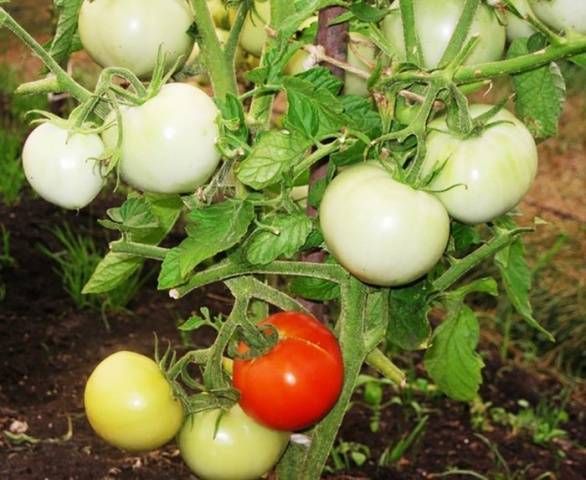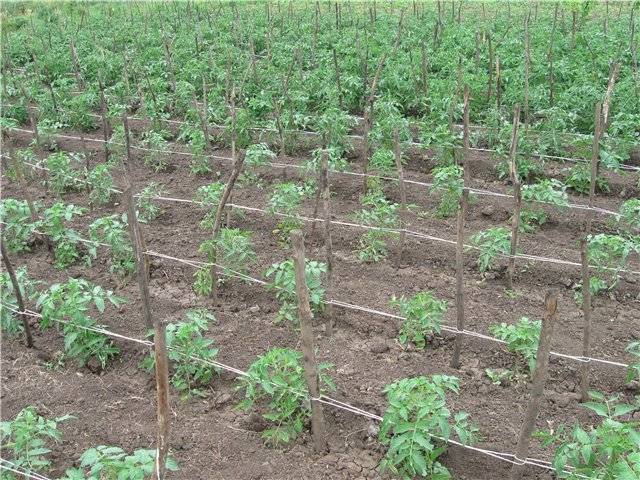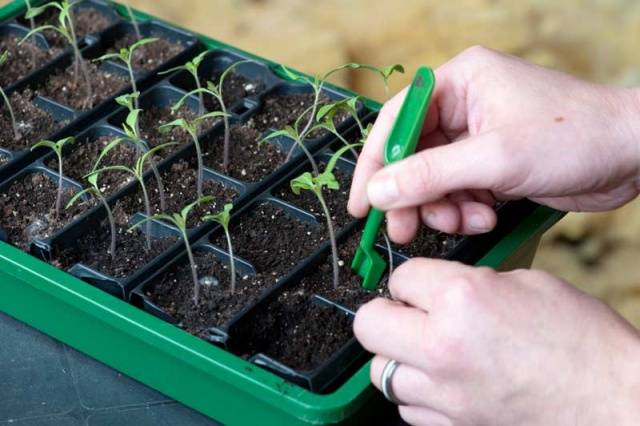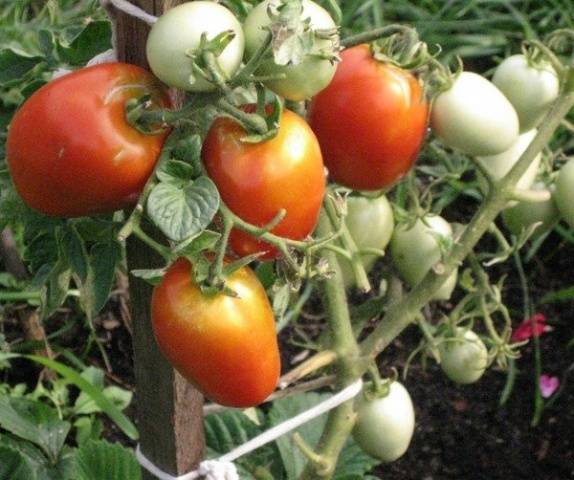Content
Tomato Snow Leopard was bred by the breeders of the well-known agricultural company "Aelita", patented and registered in the State Register in 2008. The name of the variety is associated with the habitat of snow leopards - snow leopards, these are Siberian hills and plains, where the harsh conditions do not allow growing many varieties of vegetables, including tomatoes. Aelita specialists assure that their new variety is very resistant, withstands the most adverse weather conditions. To find out if this is so, this article and reviews of gardeners who have tested the Snow Leopard tomatoes on their plots and in greenhouses will help us.
Main varietal characteristics
Before choosing a tomato variety that you are ready to plant on your site, you need to find out the reviews of gardeners, their recommendations, see a photo, decide whether the yield of this or that tomato variety will satisfy you.
Today we recommend that you familiarize yourself with the Snow Leopard tomato:
- This tomato variety belongs to crops with an early ripening period, the growing season before the appearance of the first fruits lasts from 90 to 105 days.
- Tomato variety Snow Leopard is adapted for growing in greenhouses and open beds in any climatic regions of the Russian Federation.
- The plant is classified as a determinant species, the growth of the bush is unlimited, therefore, a garter and plant formation are required. According to experienced vegetable growers who have already planted this variety of tomatoes, it is better to form bushes in 1-2 stems, not allowing them to grow above 60 cm in height.
- Tomato leaves Snow leopard is dark green in color, large. The number of leaves on the bush is above average, it is recommended to remove or pinch the lower and intermediate leaves so that they do not take away excess moisture, nutrients, and do not shade the entire plant.
- Tomato fruits have the shape of a flattened ball; there may be a slightly pronounced ribbing on top. The density of the fruit is medium, the skin is firm and firm, protects the tomatoes from cracking. At the beginning of ripening, tomatoes are light green in color, ripe tomatoes have a beautiful red-orange color. The average weight of a tomato is from 120 to 150 g, but there are also record sizes up to 300 grams.
- The yield for fruits of this size is significant, averaging 23 kg per square meter. m per season.
- Tomatoes Snow Leopard, according to the description of the variety by the creators themselves, are resistant to diseases such as fusarium - the defeat of the plant by a fungus that causes wilting.
It is interesting! In South America, wild tomatoes are still found today, the weight of their fruits is no more than 1 gram. Perhaps that is why the aborigines gave them the name Tomatl - a large berry. In other countries, tomatoes were called apples: apples of paradise - in Germany, the apple of love - in France.
Advantages and disadvantages
10 years have passed since the appearance of tomato seeds of this variety on sale. Many vegetable farms and amateur gardeners have been growing Snow Leopard tomatoes on their lands for more than one year. According to their reviews, one can already judge the advantages and possible disadvantages of the variety.
The positive qualities of culture include:
- the possibility of growing tomatoes both in greenhouses and in the open field, high adaptation to various climatic conditions;
- early ripening;
- resistance to fungal diseases;
- long-term preservation of the marketable type, transportability of the highest level;
- versatility in consumption: fresh, in pickled or salted preparations, in juices, ketchups and salads;
- excellent taste;
- high yield (when the agrotechnical growing conditions are met);
- removal of stepsons is not required.
Minus in caring for tomatoes - bushes need to be shaped and tied to supports. Many gardeners do not notice this drawback, they take it as doing a certain job, which is always enough in the garden and in the garden.
Sowing seeds
In February - early March, gardeners begin to sow vegetable seeds for seedlings. Gardeners with extensive experience grow their plants only in this way. Buying ready-made seedlings means taking a 50% risk, that is, getting the wrong variety of tomatoes, or already infected seedlings. This work needs to be done in several stages:
- Buy seeds from a responsible producer or distributor, thus protecting yourself from misgrading, do not purchase seed from unscrupulous sellers.
- Prepare seeds for planting: select high-quality ones, soak, wait for seedlings, sow seeds in a prepared substrate. Ready-made mixtures can be purchased at specialty stores.
- When three real leaves appear, pick the plants into separate containers. If necessary (the main root is very long), at this moment the roots are pinched, quite a bit, by 0.5 cm.
- Then we are waiting for warm days, favorable for planting seedlings in the ground. Until that time, we carry out regular watering, 2 weeks before transplanting into the soil, a hardening procedure can be carried out. Take the seedlings outside or on the balcony daily, preferably in sunlight, for 2-3 hours.
How to properly prepare the seeds
For beginner gardeners, this section of the article will be interesting, so we will tell you in more detail how to prepare Snow Leopard tomato seeds for planting:
- you need to prepare a saline solution: for 200 ml of water - 1 teaspoon of salt with a slide;
- pour tomato seeds into the solution and mix vigorously, leave for a while (about 30 minutes), the seeds that have floated to the surface, remove them, carefully drain the water;
- the seeds remaining at the bottom, rinse from salt water, put on a napkin;
- for prophylaxis against fungal diseases, place tomato seeds in a weak solution of calcium permanganate for 20 minutes, you can simultaneously add 1 g of growth enhancer, such powders or solutions are sold in stores;
- after the time has elapsed, drain the contents through a sieve, and put the prepared seeds on a soft damp cloth, cover with the same cloth on top, place on a shallow dish, or on a plate, if the cloth dries out, moisten it with warm water;
- within 2-3 days, a maximum of a week later, sprouts will hatch from the seeds, it is time for sowing into the soil;
- ready-made earthen substrates can be bought, but if you have the opportunity, then prepare it on your own, for this you need to mix 2 parts of fertile soil, 1 part of sand, 1 part of peat or humus. All components must be disinfected by frying them in the oven on an old baking sheet. Processing time is 1-2 hours.
- in a container with a substrate, make dimples 1-2 cm deep, you can use a regular pencil for this, the distance between the grooves is 4x4 cm, place 2 seeds in each hole (tomato seeds are very small, try to do this with tweezers);
- cover the top with earth and only then pour it carefully so that the seeds do not stray into one pile.
Cover the container with PVC film or a piece of glass, put it in a warm, shaded place, on the floor near the radiator. When two cotyledon leaves appear, the cover must be removed and the container placed closer to the light.
Planting seedlings in the ground and further care
The technology for growing tomatoes is the same for all species, the only difference is that a garter to the trellises and supports is required, or there is no need for it. Tomato Snow Leopard belongs to those types of culture that require formation and strengthening on supports.
Tomatoes of this variety can be planted in greenhouses in the last days of April, in unprotected soil - when the ground is completely warmed up. They do it as follows:
- On the site where tomato bushes will be planted, fertilizers are applied, they carefully dig up the ground, loosen, prepare holes (in a checkerboard pattern), the size between the bushes should be 60x60 cm.
- Seedlings are placed with an inclination of 45 ° to the south side, sprinkled with earth, slightly compacted with your hands.
- Water the tomatoes with water warmed in the sun, 1 liter per root, give time for the complete absorption of moisture, then mulch with leaf humus, peat or crushed tree bark.
All further care for the Snow Leopard tomato consists of:
- in irrigation, regular, but not excessive, the introduction of mineral and organic fertilizing;
- in removal weeds and loosening the soil;
- in the prevention of diseases and in the fight against harmful insects.
Tomatoes Snow Leopard are unpretentious in care, this variety will not create big problems for gardeners, but the harvest will be excellent, only with proper care.
Authoritative opinions
Amateur gardeners who already have experience in growing the Snow Leopard tomato disagree, some like this variety, some not very much. We bring a few of their reviews to your attention.
The list of new varieties of tomatoes is rapidly increasing every year, but gardeners, passionate about their work, try to keep up with the times, growing them on their plots. Tomato Snow Leopard has already gained popularity among many gardeners for its unpretentious care and productivity. We recommend you try this variety too, we wish you good luck.












